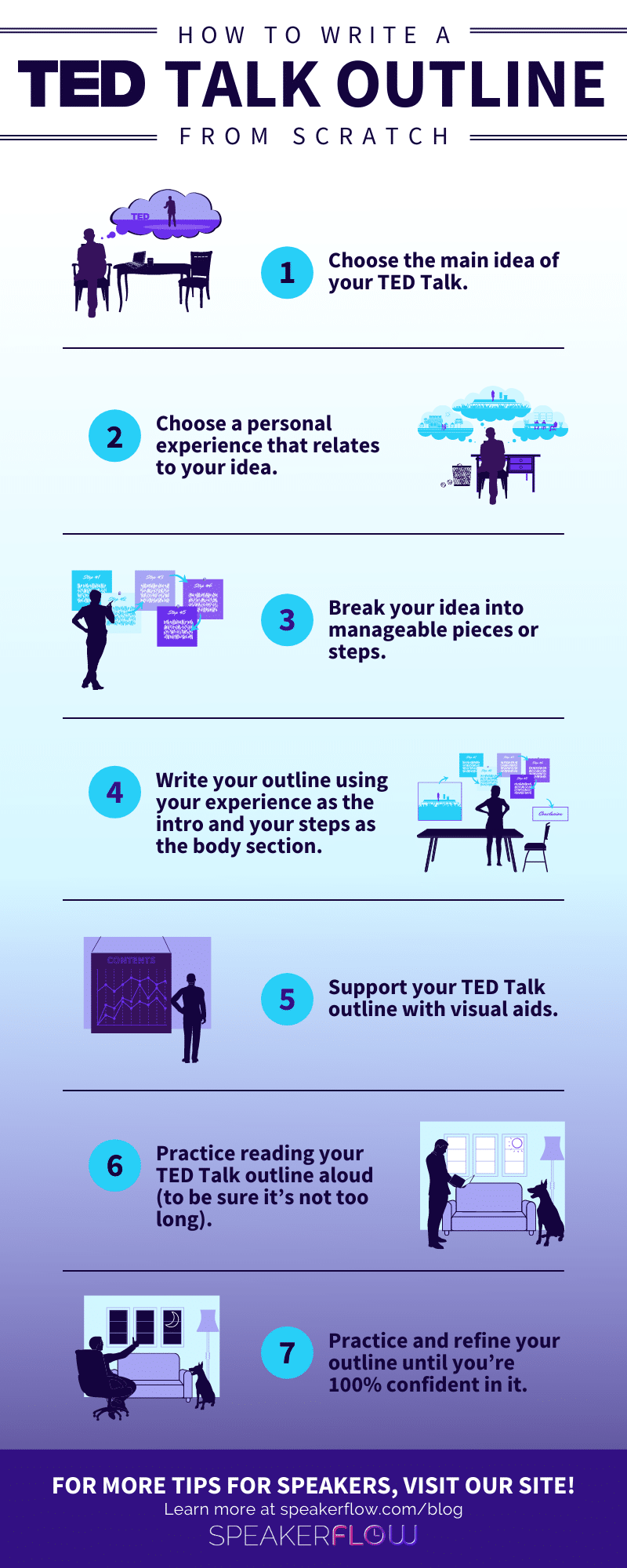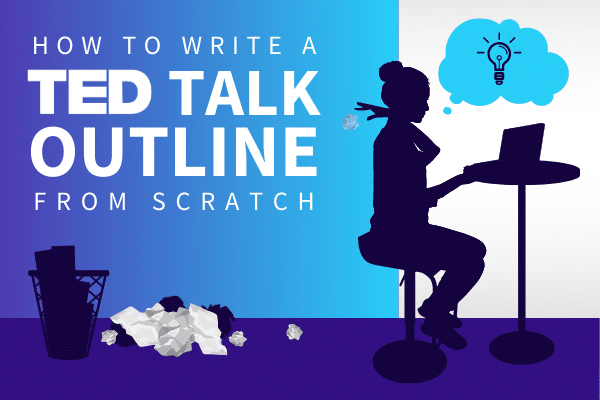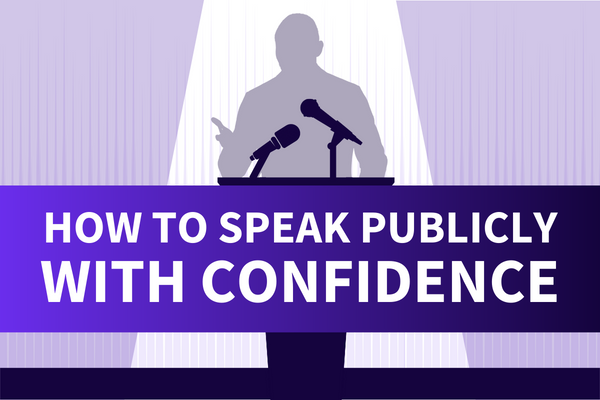Whether you’re reading this as an aspiring speaker or having just booked your first TED appearance, it’s no secret that TED Talks can be a huge boost for a professional speaker. According to past TED speakers, in fact, giving one can be game-changing in terms of both reputation and speaking fees. That said, prepping for a TED talk isn’t just gratefulness and excitement. It can also be a source of nerves, due to their unique format and the prestige of the TED Organization. Fortunately, mastering how to write a TED Talk outline doesn’t have to be painful. In this guide, we’re going to cover all the steps to knocking one out in no time.
Before we get into detail, please note that this guide focuses on the technical aspects of writing TED Talk outlines. In other words, while we at SpeakerFlow have no trouble compiling resources, none of us have given a TED Talk. In light of that, I highly recommend also reaching out to other TED or TEDx speakers in your network to learn about their experience and how they recommend preparing for a TED event. That way, when the event itself comes, you’ll be fully prepared and ready to dazzle your audience. ✨
- Choose the main idea of your TED Talk.
- Choose a personal experience that relates to your idea.
- Break your idea into manageable pieces or steps.
- Write your outline using your experience as the intro and your steps as the body section.
- Support your TED Talk outline with visual aids.
- Practice reading your TED Talk outline aloud (to be sure it’s not too long).
- Practice and refine your outline until you’re 100% confident in it.
Choose the main idea of your TED Talk.
First, before you begin writing your TED Talk outline, identify the main idea of your talk. Although you may not explicitly state it until the end, this idea will serve as the foundation for your presentation. As such, it should build off your experience as an industry expert while fitting the theme of the TED event.

One way to approach this is to review past TED Talks to see where they overlap with your primary discipline. One of the most popular, for example, is “The Danger of a Single Story” by Nigerian author Chimamanda Ngozi Adichie. In her talk, Adichie mentions that “Stories have been used to dispossess and to malign, but stories can also be used to empower and to humanize”. Although she is presenting this idea as it relates to books, the same argument can also be applied to political conversations, social media – any field in which exploring new ideas is key. Likewise, looking at your own field, compare how it lines up with other TED Talks. It may be the source of inspiration you’re looking for.
Alternatively, another way to approach your main idea is by asking the following questions from TED: “Is my idea new?,” “Is it interesting?” and “Is it factual and realistic?” Ideally, your main idea should check each of these boxes while also corresponding with your area of expertise. That way, you not only share a great idea. You also ensure that you have the greatest possible chance of connecting with your audience. After all, the purpose of TED Talks is sharing “ideas worth spreading” and, consequently, “chang[ing] attitudes, lives and, ultimately, the world”. Your TED Talk outline and its main idea should aim to do the same.
Choose a personal experience that relates to your idea.
Next, after choosing your main idea, ask yourself how it relates to your personal and professional life. What led you to your conclusion about your main idea? Who have you met that’s shaped this idea? How has your stance regarding your main idea changed over time? All of these questions are starting points, but the goal is to take your main idea and summarize how it relates to you, not as a speaker but as a human being.

Within the TED Talk archive, a great example of this is Monica Lewinsky’s 2015 TED Talk, “The Price of Shame“. In this lecture, Lewinsky outlines some of the long-term negative effects of public shaming including anxiety, depression, and, in extreme cases, suicide. However, she also opens up about her own all-too-famous scandal with former U.S. President Bill Clinton in the 1990s and how the public shaming that followed made her life painful for decades after. In this way, she not only shows her audience the subject of public shaming from her point of view. She also successfully connects with them, reinforcing her primary argument that those targeted by public shaming are still human and even virtual shaming can have detrimental effects.
In your own TED Talk outline, sharing your experience will accomplish the same thing. Standing on stage, it can be tempting to assume that because you’re in the spotlight, your audience will listen. Yet, any member of your audience (and on the TED team) will tell you that simply isn’t true. As a result, keep in mind that connection comes first from emotional investment. Be yourself and be vulnerable and your main idea will immediately become more intriguing for those watching you, guaranteed.
Break your idea into manageable pieces or steps.
At this point, it’s time to break your main idea into easily digestible pieces of information. These pieces will make up the sections of your TED Talk outline, ultimately making your talk, as a whole, easier for the audience to understand and remember. It will also make it easier for you to memorize, as it’s generally recommended that you not use notecards during your presentation.

One common structure is the argumentative approach. In this case, the term “argumentative” doesn’t mean “antagonistic.” Instead, it refers to typical discussion structure, like an argument in a professional debate. In a TED Talk setting, this generally includes three sections. First, introduce your main idea and any background information. Second, present evidence for the main idea, so as to prove your point. Lastly, give your conclusion, based on the evidence provided. In essence, this takes your audience through your thought process, ideally leading them to your conclusion in the process. This structure works well if you have a controversial idea for which you know you’ll have audience pushback or doubt.
Alternatively, for easy-to-accept ideas, another common structure is the step-by-step approach. Here, the main idea and benefits of accepting it are clear. However, after your introduction, the audience is still left asking, “How can I make that happen?” In this case, your TED Talk outline would have sections devoted to each step of the process that answers this question. In this situation, your audience enters your TED Talk interested but apprehensive and leaves confident that they can accomplish the goal your main idea describes.
Again, with these or any structure, your main goals are to (a) bring your audience to your point of view and (b) give them the tools to turn your words into action after they leave the TED auditorium.
Write your outline using your experience as the intro and your steps as the body section.
By now, you have all of the necessary components of your presentation in mind. Now, it’s time to build them into a cohesive TED Talk outline. Your outline, as a whole, should begin with a strong introduction, expand into a concise but thorough explanation of your main idea, and end with a reminder of how and why acting on your main idea is necessary. Combined, this invisible structure is a proven way to attract and retain your audience’s attention, as demonstrated by many past TED speakers. Luckily, many of these speakers have also shared their insights, so you can follow their lead and give an equally stellar performance of your own. Below are a few of their most valuable tips and tricks.
Crafting the Introduction of Your TED Talk Outline
First, begin your TED Talk outline with a powerful introduction. This component of your speech is arguably the most important, as the more easily you can capture your audience’s attention initially, the more likely they are to stay engaged. It’s also important that your introduction provides a clear and easy-to-understand explanation of your main idea. Although the bulk of your explanation will take place in the next section of your TED Talk, the body, giving a simple explanation at the beginning of your Talk doesn’t just lay the groundwork for the rest of your evidence. It also demonstrates, to your audience, that your idea isn’t daunting. That way, they’re able to listen to your later call(s) to action (or your field as a whole) and think, “I guess this isn’t too complicated for me to take an interest in.”
To accomplish these goals, many speakers recommend building your introduction around the personal experience you chose back in Step #2. This allows you to relate more closely to your audience, lead up to the introduction of your main idea, and grab your audience’s attention all in one swift motion. In the event that your main idea is a heavy topic, beginning with a humorous story can also help lighten the tone of your Talk, making it easier for you to be frank with your audience without being depressing. In short, your introduction should be interesting but not overkill, honest but not harsh, and explanatory but not wordy. Remember, it’s only the prelude to the bulk of your TED Talk outline.
TED’s Introduction Tips
- Be quick and concise (i.e. don’t dance around your main idea).
- Focus on the audience, not yourself.
- Avoid stereotypical openings to presentations (dictionary definition, list of statistics, etc).
- Start with a reason that the audience should care about your main idea.
- For a well-known main idea, start by clearly stating it.
- For a lesser-known main idea or an idea in a lesser-known field, start by explaining a related topic or idea that is well-known. Then, link that back to your main idea.
- For emotional or heavy topics, start by candidly stating it. Avoid being candid to the point of being harsh, and avoid anything that suggests you’re trying to force an emotional reaction.
[hubspot type=cta portal=5815852 id=3c9311b6-9f9d-42ea-99a9-0a9323d91688]
Building the Body of Your TED Talk Outline
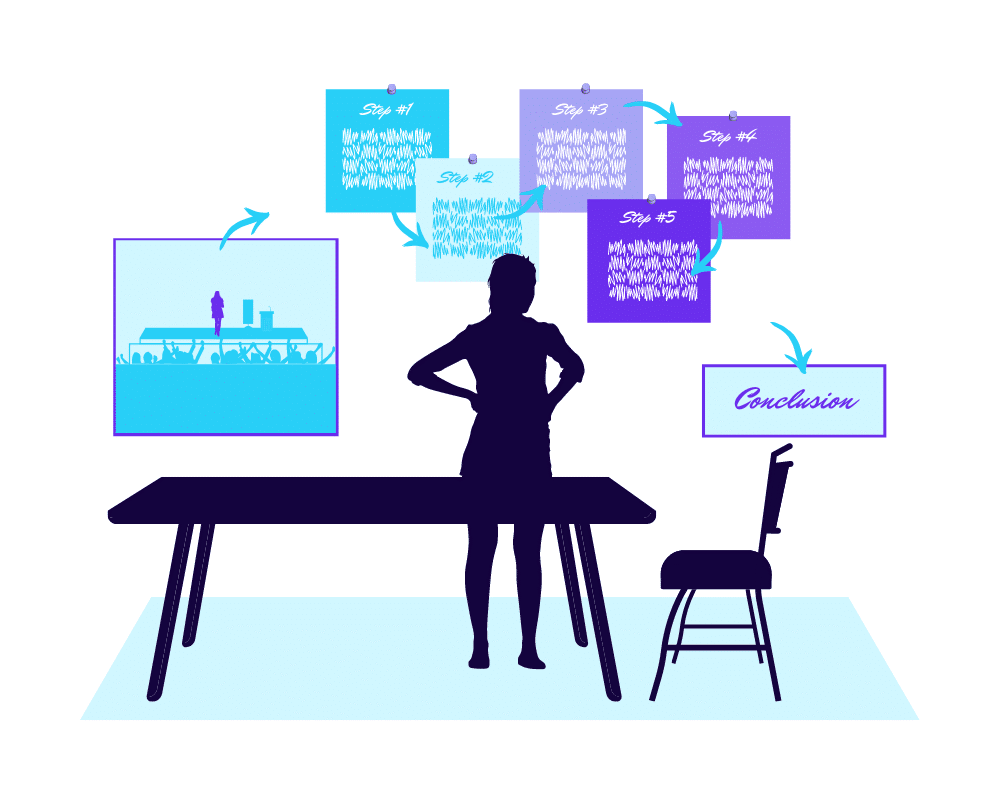
After constructing the introduction, it’s time to draft the body of your TED Talk outline. For this part of your Talk, the focus should be on retaining your audience’s attention and providing sufficient evidence to support your main idea. Here, it’s important to again provide balance, showcasing necessary information for your thesis but not so much that your audience loses interest or gets confused. In addition, the body of your outline should build upon your introduction and provide next steps for your audience to take with them, once your TED Talk is over. That way, your main idea lives beyond the room and the audience is guaranteed a more impactful presentation.
To meet these objectives, the best TED speakers use the “manageable pieces” we covered back in Step #3 to build a sort of story or handbook. For the former, each piece is a different event that leads into the conclusion, or the happy or sad ending of your story. This is especially useful if you’re focusing on an emotional topic or lacing your personal experience throughout the content of your presentation. For the later, each piece is more evidence-oriented with each piece acting as support for your main claim. Contrary to the “story” layout, this structure is used largely in science-oriented presentations, where strong empirical evidence is mandatory.
In essence, regardless of the route you choose, each “piece” is a different subsection of this section of your Talk. This allows you to build on top of each individual piece of information and, in doing so, bring your audience to understand and accept your conclusion.
TED’s Body Paragraph(s) Tips
- Build a list of the evidence you want to cite in your presentation, keeping in mind that you will need more evidence surrounding things you need to convince your audience of. Then, with the help of a friend or daily member (not a colleague), remove any evidence that isn’t absolutely essential to your argument.
- Focus on new information. If you must include basic information, for the sake of introducing more advanced information, keep it brief.
- Use empirical evidence, not anecdotal evidence.
- Keep your verbiage simple. If you must use complex terminology, leave time to briefly explain it.
- Acknowledge and politely address any contradictions to your main idea. These include, according to TED speakers, “controversies in your claims, legitimate counterarguments, reasons you might be wrong, or doubts your audience might have about your idea.”
- Use slides to help explain complex or pivotal points in your presentation. For slides with citations, be sure to keep your citation confined to a corner of the screen, so that it doesn’t detract from the primary content of the slide.
Forming the Conclusion of Your TED Talk Outline
Lastly, every good TED Talk ends with a killer conclusion. As mentioned a few times in this guide, there are two things that your conclusion should be above all else: positive and compelling. While the body paragraphs of your TED Talk outline are all about explaining your main idea, your conclusion should drive home why it’s important. It should also communicate this in a positive way. Even for tough topics and uncomfortable situations, the purpose of TED Talks is to showcase problems and propose solutions. That way, members of the audience can approach them not only with well-rounded knowledge about the issue at hand but also with an “I can handle this” attitude.
Depending on your personal style, there are many ways you can accomplish these goals and end on a high note. Some speakers opt for a joke, others an inspirational quote, and still others a straightforward reminder of why the audience should care. Keeping those options in mind, below are the most commonly-cited conclusion tips from past TED speakers.
TED’s Conclusion Tips
- End on a high note. Your audience should, ideally, leave with a sense of positivity towards you and your main idea.
- End, if appropriate, with a call to action and a reminder of why your main idea is worth implementing in their lives.
- Avoid ending with transactional language or anything sales-related (book cover, company logo, etc.). The goal of the talk is to share ideas, not promote a specific individual, business, product, or service.
Support your TED Talk outline with visual aids.
The next step in preparing for your TED Talk is adding visual aids. For many presentations, visual aids are immensely helpful both for the audience and the presenter. If you’re explaining a complex process, for example, a visual diagram can make it easier to understand. Likewise, if you’re describing a story, including images of the people involved can help your audience better follow along. In short, while you shouldn’t rely on visual aids to communicate your message on their own, they should act as supporting characters in your presentation.

One example of this is the 2012 TED Talk, “Strange Answers To The Psychopath Test” from British writer and documentarian Jon Ronson. In this Talk, Ronson tells the story of his experience with a criminal who faked psychopathy in order to avoid prison time. Although it’s not a complicated story, Ronson’s slides provide a visual for the audience to follow as he explains his conversations with Tony, the aforementioned criminal. First and foremost, this makes it effortless to follow along with his story, despite any tangents or jokes that may otherwise distract from the “plot”. Secondarily, each slide also allows Ronson to add an extra “punch” to the comedic twists of his story. This makes his TED Talk, as a whole, not only engaging but also memorable, as the audience leaves with both visual and audible memories of the experience.
To sum things up, although visual aids aren’t always necessary, they can provide support for your main idea and make it more notable for the members of your audience. Keep this in mind, as your write your TED Talk outline. Then, consider simple explanatory slides where your outline could use some reinforcement.
Practice reading your TED Talk outline aloud (to be sure it’s not too long).
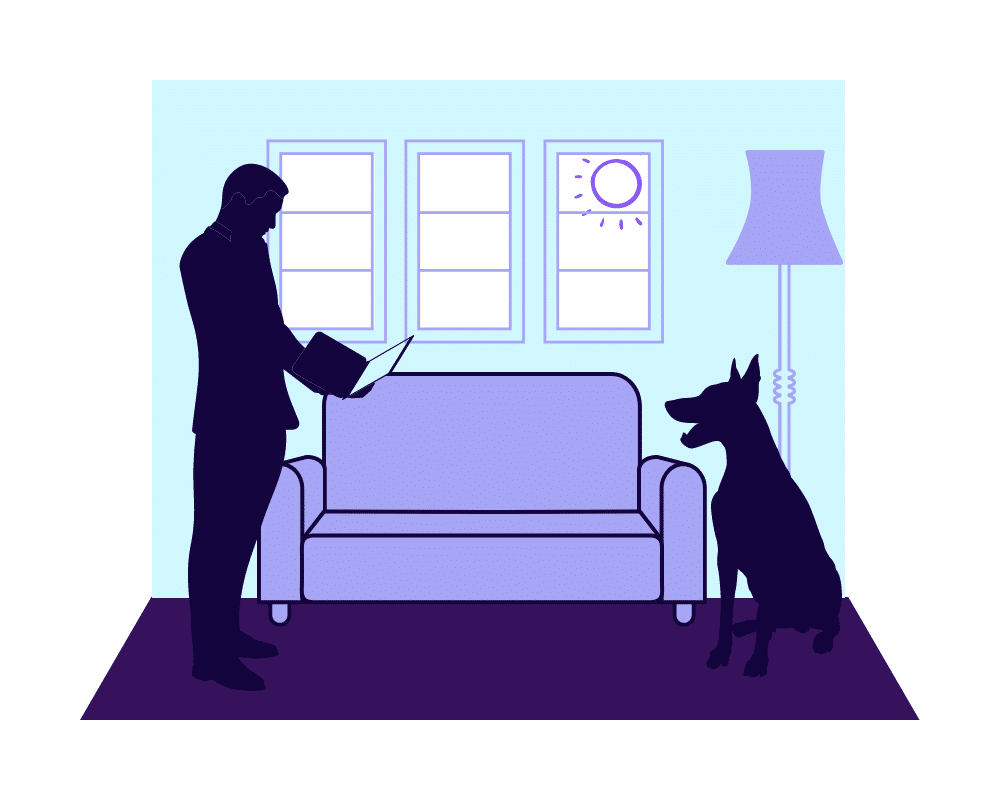
Next, after your outline and visual aids are prepared, it’s time to practice. It goes without saying that more practice only leads to a better presentation in the end. However, in the case of a TED Talk, practice is equally important when it comes to staying beneath the 18-minute time limit. According to the TED Organization, this limit is non-negotiable, regardless of the speaker or the complexity of their chosen topic. This is for two reasons, the first of which is the audience’s attention span. As TED puts it, “We’ve found that a carefully prepared presentation of this length can have an astonishing impact.” In other words, 18 minutes allows the speaker enough time to share their idea without risking the attention of the crowd. The second reason is simply to create a level playing field. That way, no speaker is given preference based on their idea or their reputation.
That said, depending on the setting, the length of a TED-affiliated presentation can range from fewer than six minutes to the maximum 18-minute limit. Part of this depends on the platform in which your Talk takes place. If you’re speaking at a TEDx event, it may be shorter. If you’re speaking at the annual, five-day TED Conference, it may be longe. For virtual speakers, it may even be extended to allow for additional audience engagement, such as a post-talk Q&A session.
Essentially, the length of your TED Talk and, by extension, your TED Talk outline, is contingent on the setting, size, and budget of the event hosting you although it should be around 18 minutes. To be sure you’re under the limit, verify your limit with the event organizer. Then, practice performing your outline, cutting it down as needed to meet that limit.
Practice and refine your outline until you’re 100% confident in it.
Finally, once you have your outline prepared to meet the time limit, there’s only one thing left to do: practice. As any professional speaker will tell you, nothing bad comes of over-preparing for an event. Likewise, when preparing for a TED Talk, the most beneficial thing you can do is rehearse as much as possible.
In fact, the following excerpt sums up the recommendations of TED event organizers and TED speakers better than I could:
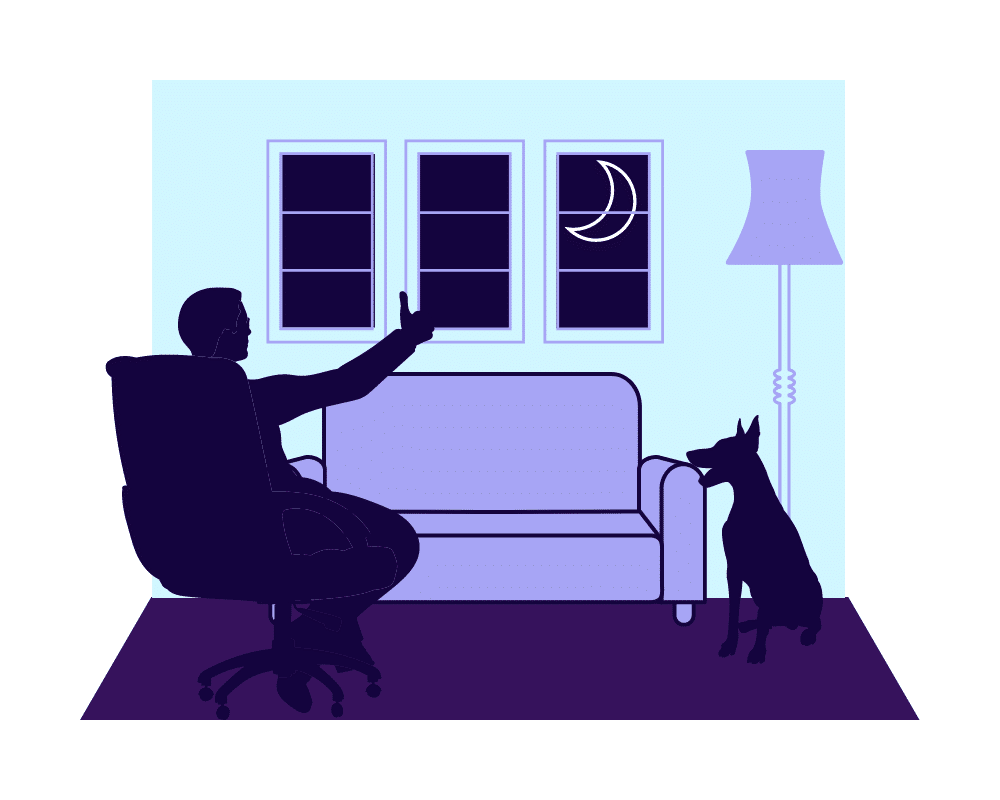
“We can’t stress this enough. Rehearse until you’re completely comfortable in front of other people: different groups of people, people you love, people you fear, small groups, large groups, peers, people who aren’t experts in your field. Listen to the criticisms and rehearse, rehearse, rehearse. If someone says you sound ‘over-rehearsed,’ this actually means you sound stilted and unnatural. Keep rehearsing, and focus on talking like you’re speaking to just one person in a spontaneous one-way conversation.”
To summarize, if you want to write a solid TED Talk outline, the greatest thing you can do, besides preparing your main idea and personal experience, is practice as much as you can. That way, whether you’re nervous on stage or just nervous about the TED stage in particular, you’ll be able to confidently deliver your Talk and meet the TED goal of “chang[ing] attitudes, lives and, ultimately, the world” head-on.
For more detailed information about the TED Organization and its events, check out our previous blog, “What Is A TED Talk? The Fundamentals of TED Explained“. Additionally, for TED Talk outline tips and tricks straight from the TED team, see their TEDx Speaker Guide or their Illustrated Guide for TEDx Speakers. 👍
